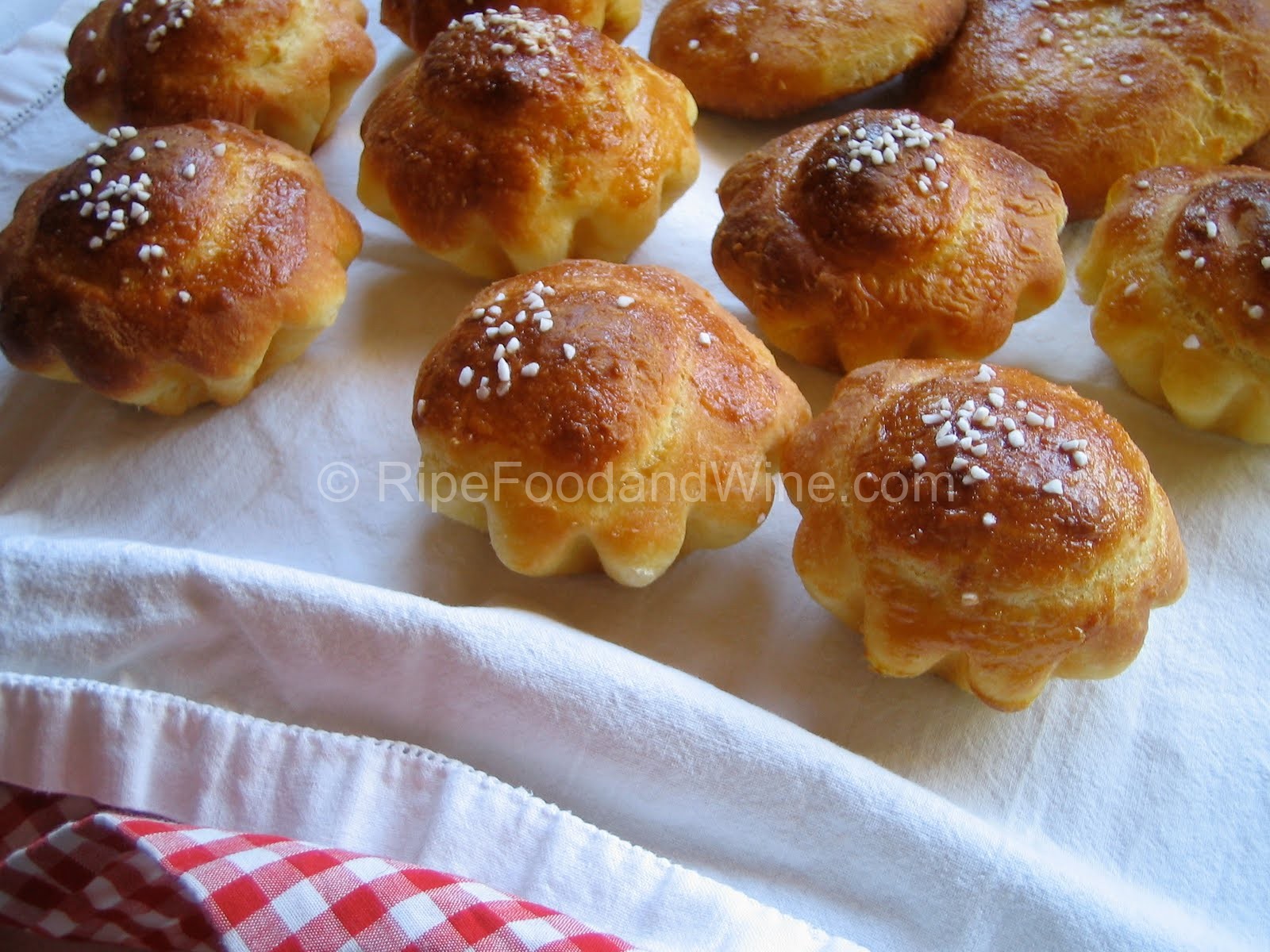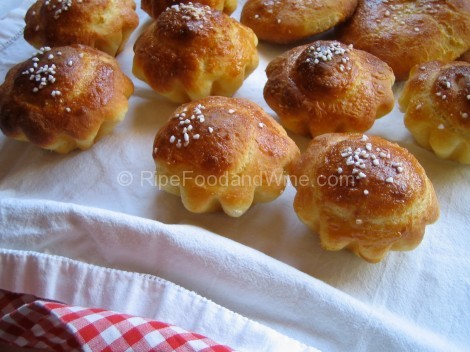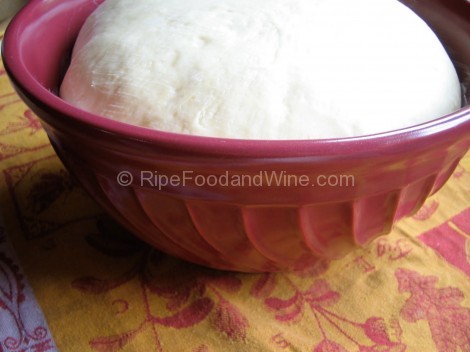If you’re the type of person who likes the feeling of accomplishment, I want you to stock your pantry with those little 3-pack envelopes of yeast and start making bread. I find the breakfast breads especially gratifying, probably because I like baking in the evening (love my friend Flo’s quote, “Baking — it’s a solitude kind of thing.”) and having the house smell like a bakery the next morning.
Brioche is made from a dough rich with butter and eggs. It is quite loose and batter-like when you first mix the ingredients, but it firms up and becomes more bread dough-like after its overnight in the refrigerator. Ideally, you want two rises (e.g. start the process the afternoon before the morning you want to bake) for the absolute best flavor, but I can attest that if you cheat, and only do one rise (overnight), the results are still pretty great.
Brioche
makes 3 pounds dough, enough for 2 loaves Nanterre (8x4x3 inch pan) and 8 small brioche à tête (or 3 loaves, or 24 petite brioche à tête)
makes 3 pounds dough, enough for 2 loaves Nanterre (8x4x3 inch pan) and 8 small brioche à tête (or 3 loaves, or 24 petite brioche à tête)
2 envelopes active dry yeast (1/4 oz. each envelope)
4 cups all purpose wheat flour
2 tablespoons granulated sugar or unrefined cane juice crystals
2 tablespoons whole organic milk
3 teaspoons kosher salt
6 eggs
1 1/2 cups unsalted, organic butter (3 sticks) at room temperature
1. In the workbowl of a standing mixer, sprinkle the yeast and stir in 2 tablespoons warm water using a spatula. You want the water warm enough to activate the yeast but not hot or you will kill the yeast, which will not make for very cute têtes. The yeast granules should turn into a creamy paste when you stir in the water and let it sit a couple minutes.
2. Sprinkle sugar and salt over the yeast and add the milk. Using the paddle attachment to your standing mixer, mix these ingredients for a few seconds, then add the flour. Mix for a couple minutes to combine.
3. Add 4 of the eggs and mix to combine. Switch paddle to the dough hook.
3. Add 4 of the eggs and mix to combine. Switch paddle to the dough hook.
4. With the mixer running on medium (using the dough hook), add egg #5, continue mixing until the dough has fully incorporated it, then add egg #6 and keep mixing for 15 minutes.
5. After the 15 minutes of kneading (previous step), it’s Butter Time. As the mixer continues to knead the dough, add the butter in egg-sized lumps, waiting for the dough to mostly incorporate the previous butter lump before adding the next. Once you have all the butter incorporated, turn off the mixer. Turn the dough out onto a clean counter dusted with a little flour and knead by hand a few times while you shape the dough into a round form.
6. Generously butter the inside of a large, ceramic or glass bowl. (You want a bowl big enough to accommodate the dough doubling in size.) Place the dough in the buttered bowl, cover with a clean kitchen towel and let rise 1 1/2 hours at warm room temperature. The next photo is post-rise:
7. Punch down the dough, fold it over in the bowl, re-cover with towel and place in the refrigerator for an overnight stay.
8. The morning of the bake, remove the dough from the refrigerator and turn out onto a clean counter dusted with a little flour. Cut the dough into 3 equal sized pieces. Each piece can be either a loaf Nanterre or 8 petite têtes.
- Loaf Nanterre: divide the dough piece into 3 little chunks and roll each into an oval. Place the ovals in the bottom of a buttered 8x4x3 inch loaf pan.
- Petite Têtes: divide the dough piece into 8 little chunks and roll each into a little drumstick. Press into buttered metal brioche pans (twisting the top little bit and pushing it into the bigger bottom piece) and set the little pans on a cookie sheet pan for best stability. (The ones in the photo are sprinkled with some coarse sugar, Swedith Pearl Sugar from King Arthur.)
9. Preheat oven to 400 degrees F (for loaves), 375 degrees for little guys. If you’re baking a combo of both, bake first 10 minutes at 400 then lower the heat to 375 for the remainder.
- Loaf Nanterre: 35 minutes
- Petite Têtes: 10-12 minutes
10. Remove from oven and let cool on racks for 10 minutes. Remove the breads from the pans and let cool completely on racks. Yay! You did it!
Amy’s Kitchen Coach Tips
- You need a sturdy mixer for this dough, as you’ll be giving it quite a workout. A Kitchen Aid mixer is ideal.
- You need 3 hours immediately before you want to bake the lovelies to do the forming and proofing (final rise). I’m just sayin’.
- I like to consult my favorite pro bakers for their brioche recipes and techniques. Dorie Greenspan’s, Baking, is a fantastic book.
- If you’ve really got time on your hands, you can do the room temperature rise twice — punch down after the first 1 1/2 hours then let rise again before going into the overnight in the fridge.
- The Nanterre loaves make great bread for serving with egg salad, charcuterie of all kinds or smoked salmon. (Don’t forget the crème fraîche!)
- Make ahead note: After the overnight rise, you can freeze all or some of the dough to deal with later. When you want to proceed with forming and baking, take the dough out of the freezer and let it thaw in the refrigerator for 24 hours. Keeps up to 1 month in the freezer.





